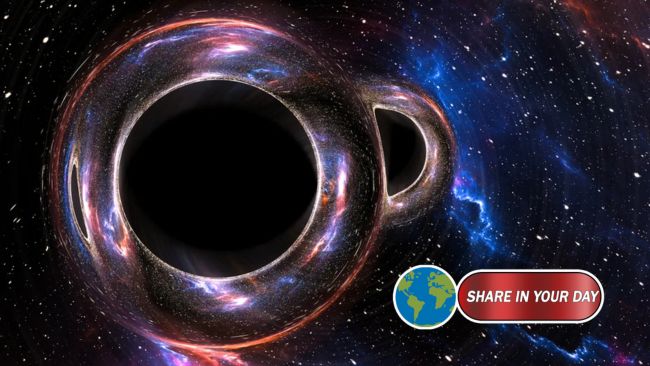Record-Breaking Gravitational Wave Detection Suggests Black Hole Mergers Are More Complex Than We Thought
The detection of two extraordinary gravitational waves in late 2024 is shedding new light on the mysteries of black hole mergers and could be a major step forward in understanding these cosmic collisions. These events, reported by the international LIGO-Virgo-KAGRA Collaboration, were detected in October and November 2024 and are challenging previous theories about the formation and behavior of black holes in dense cosmic environments.
A Decade of Gravitational Wave Discoveries

Since the first detection of gravitational waves a decade ago, scientists have observed hundreds of these ripples in space-time, produced by collisions between extremely dense objects like black holes and neutron stars. But the two recent detections, GW241011 and GW241110, represent something entirely different, hinting at a complex process of black hole formation that was previously unknown.
The First Detection: GW241011
The first event, GW241011, was detected on October 11, 2024. It involved the merger of two black holes—one roughly 17 times the mass of the Sun, and the other about seven times the Sun’s mass. Located 700 million light-years away, the collision was remarkable for the speed at which the heavier black hole was spinning, approximately 75% of the theoretical maximum. This high spin rate was an unexpected feature, adding complexity to the understanding of black hole dynamics.
“It’s an incredibly exciting discovery,” said Stephen Fairhurst, professor at Cardiff University and spokesperson for the LIGO Scientific Collaboration. “This black hole’s extreme spin indicates that it may have been formed through a series of previous mergers.”
The Second Detection: GW241110
The second detection, GW241110, was observed a few weeks later, and it presented an equally puzzling scenario. This event also involved two black holes, but their masses were slightly different—around 16 and eight times the mass of the Sun. What made this event unique was the direction of the spin of the black holes. Normally, when black holes orbit each other, their spins align with their orbital motion. But in this case, the larger black hole was spinning in the opposite direction.
“This is a first for us,” said Fairhurst. “The unusual spin orientations are suggestive of a black hole merger occurring in an already complex, hierarchical system.”
Second-Generation Black Holes: A New Paradigm?
Both GW241011 and GW241110 suggest that these black holes might not have formed in isolation, but rather through previous mergers. These “second-generation” black holes are the result of earlier black hole collisions, marking a significant shift in how scientists view black hole formation. The discovery implies that some black holes are not just solitary objects but part of a more dynamic, dense environment—one where mergers occur in rapid succession.
“The spins and masses of these black holes indicate that they may be the products of hierarchical mergers,” said Gianluca Gemme, spokesperson for the Virgo Collaboration. “These findings challenge traditional models of black hole formation and highlight the need for further investigation into the environments where these events occur.”
Unprecedented Precision: Testing General Relativity and Particle Physics
What sets these new detections apart from earlier gravitational wave observations is not just the unusual properties of the black holes involved, but also the precision with which they were measured. The LIGO, Virgo, and KAGRA detectors are now more sensitive than ever, providing an opportunity to test both general relativity and particle physics at unprecedented levels.
One of the key tests involved examining the potential effects of ultralight bosons—hypothetical particles that might explain dark matter. Thanks to the new data, scientists were able to rule out a wide range of possible masses for these particles.
Additionally, the measurements were used to test Einstein’s theory of general relativity. According to Carl-Johan Haster, assistant professor of astrophysics at the University of Nevada, Las Vegas, the results showed “a remarkable agreement between theory and observation.” This reinforces our understanding of general relativity, but also suggests that future discoveries could reveal new physics beyond Einstein’s framework.
What Does This Mean for the Future of Gravitational Waves?
The latest findings are not just a breakthrough for black hole research—they’re a significant step forward in our broader understanding of the universe. The observations challenge existing models of black hole formation and provide a new framework for studying cosmic environments.
“GW241011 and GW241110 are among the most novel events in the hundreds of gravitational waves we’ve observed,” Fairhurst said. “These findings underscore how much we still have to learn about the fundamental processes that shape the universe.”
A New Era of Cosmic Exploration
As gravitational wave observatories become more advanced, scientists hope to uncover even more details about these fascinating cosmic phenomena. With the ongoing work of the LIGO, Virgo, and KAGRA collaborations, and with future projects like the Laser Interferometer Space Antenna (LISA), we’re poised to explore deeper into the heart of black hole mergers and the very fabric of space-time itself.
The discoveries surrounding GW241011 and GW241110 were published in The Astrophysical Journal Letters, marking a major milestone in gravitational wave astronomy.



